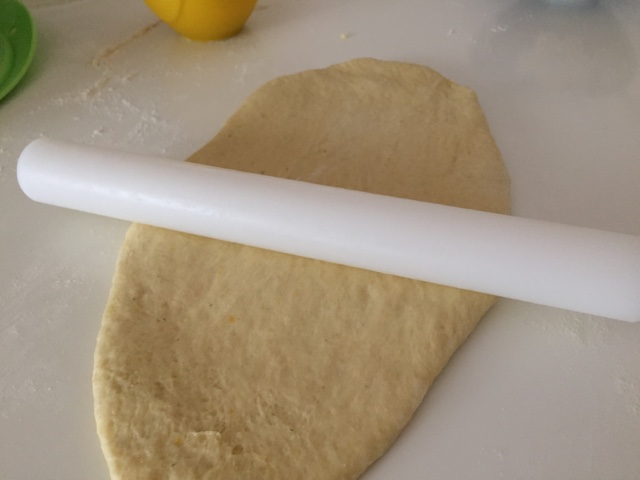I'm starting to like kneading bread dough by using the effortless autolyse and fold method. The natural yeast poolish dough helps to keep the bread soft and moist for an extended period of time.
Today, I added steamed corns to the dough by grinding them into juice, as well as added as coarse grains. I prefer the finer texture of the corns instead of whole kernels :)
Bread weight: 717 g
Raw dough weight: 731g
Yield: one 20x10x10 cm loaf
Natural Yeast (100% hydration)
Ingredients
110g natural yeast poolish dough
50g water
50g unbleached bread flour
Click the link for the method of cultivating natural yeast:
Directions
1. In a sterilized and dry glass container, pour in all the 3 ingredients and mix well.
2. Close the lid tight and allow to stand overnight, or till the content double in volume. This may take about 3 to 8 hours depending on the yeast strength.
3. The next morning, in order to "wake up" the yeast, I added a small amount of water and flour to activate it.
Added 10g water + 10g flour, and waited 1 hour for the volume to double.
4. Collect 110g natural yeast for later use, and keep the remaining back to the fridge.
Bread dough
Ingredients
All ingredients in room temperature
309g bread flour
24g full cream milk powder
35g raw sugar
1 tsp salt
1 tsp instant dry yeast
30g unsalted butter, softened
28g beaten egg
110g natural yeast *
135g water
50g steamed corn kernels
2g pandan leaf (optional)
* natural yeast can be replaced by 55g water and 55g of bread flour, if you're not using natural yeast.
Filling
21g steamed corn, chopped coarsely
Directions
1. Steam corn kernels at high heat for about 15 minutes.
2. After the steamed corn has cooled down, blend 50g of corn with 135g of plain water, and 2g of pandan leaf in a food blender.
3. Add all the ingredients, except the chopped corn, into a big mixing bowl.
4. Stir in one direction until the mixture forms into a lump and pulls away from the wall of the mixing bowl.
5. Cover with a lid and let the mixture autolyse for 15 minutes.
2. After the steamed corn has cooled down, blend it with 105gbofnplainbwater
6. After the 1st 15-minute rest, grasp one corner of the dough, pull it up and fold it across the dough.
Take care not to break the dough while you extend the dough.
1st pull & fold session.
Continue this pull & fold for about 6 times round the dough.
Repeat the pull & fold session for about 4 to 6 sessions, or till the dough can be extended to form a membrane.
Picture showing 4th pull & fold season. The dough will become smoother and smoother.
15 minutes after the 5th pull & fold session, the dough can be stretched to form a thin membrane.
5. Pull down the side of the dough and tug at the bottom to shape the dough into a smooth ball.
Place the dough back to the mixing bowl, cover with a lid, and let it undergo the 1st proofing for about 45 minutes, or till it doubles in size.
6. Sprinkle flour over the dough as well as the work top. Invert out the dough and deflate it with your palm.
7. Divide the dough into 3 portions, about 243g each.
Roll up the doughs, and shape them into 3 balls. Cover with a lid and let them rest for about 10 minutes.
8. Flatten the dough with a rolling pin,
fold in the two wings,
Roll it out again
9. Place the roll-up dough into a greased 20x10x10 cm Pullman tin. Spray some water over the dough, and place in an oven to undergo 2nd proofing for about 30 to 45 minutes, or till the dough almost reaching 4/5 of the Pullman tin height.
10. Start to preheat oven to 210 degree Celsius for about 10 minutes. Close the lid and bake in the oven for about 40 to 50 minutes. Place the Pullman tin at the lowest rack.
11. The bread is ready when the crust turns golden. Remove the bread from the tin and cool down over a wire rack.
12. Slice the bread after cooling down :)
By keeping the bread in the fridge during the nights , the bread remained soft till the 4th day.

















































No comments:
Post a Comment
I love seeing your comment and sharing it with other readers. Your comment would be published after moderation. Thank you :)